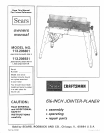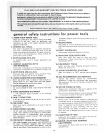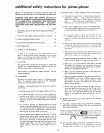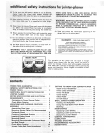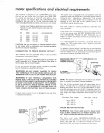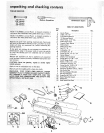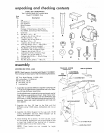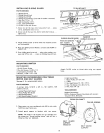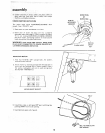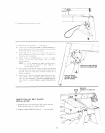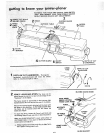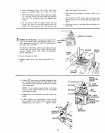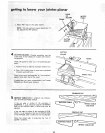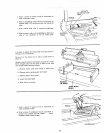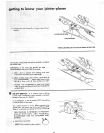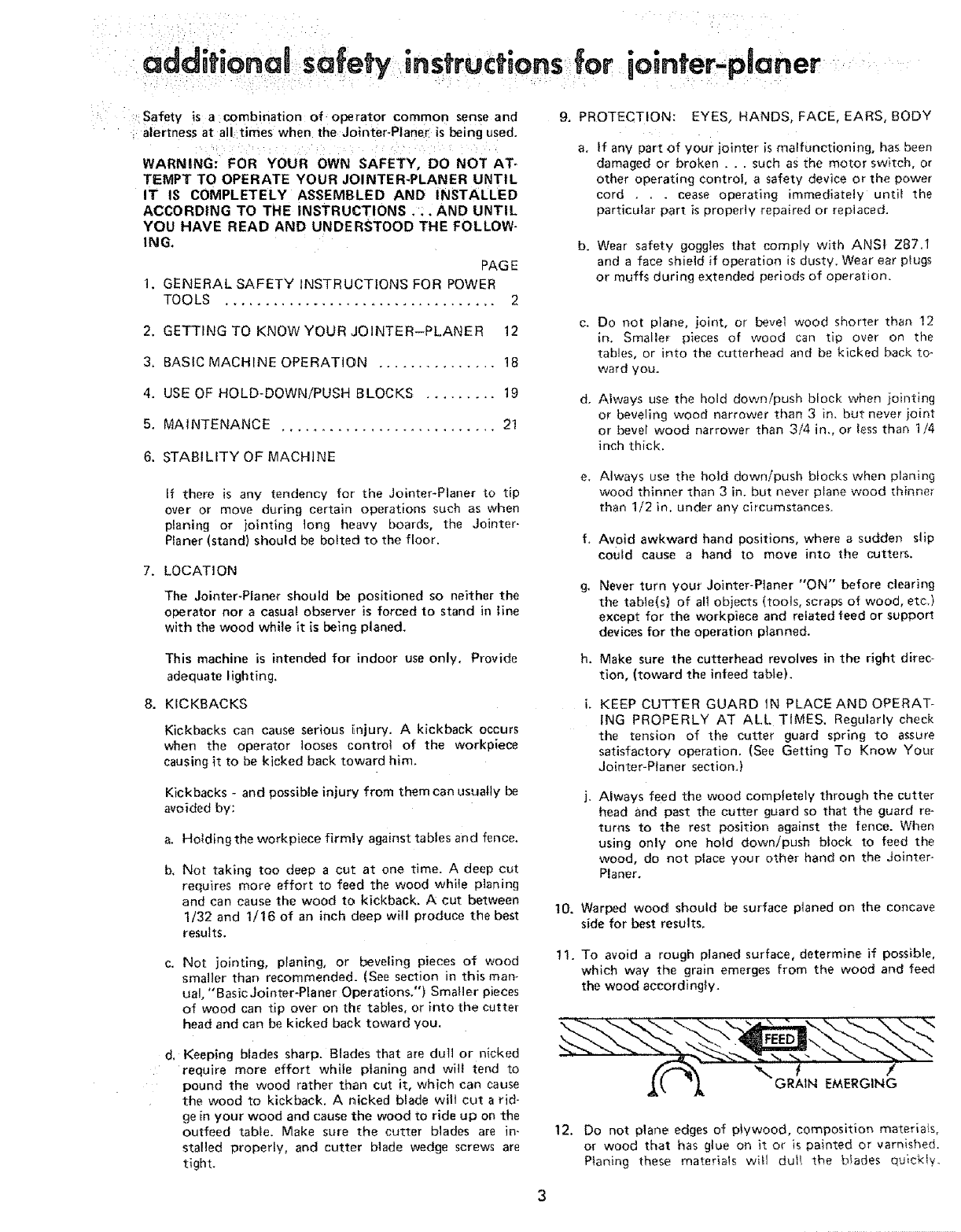
Safetyis a combination of operator common sense and
alertness at all times when the Jointer*Planer is being used.
WARNING: FOR YOUR OWN SAFETY, DO NOT AT-
TEMPT TO OPERATE YOUR JOINTER-PLANER UNTIL
IT IS COMPLETELY ASSEMBLED AND INSTALLED
ACCORDING TO THE INSTRUCTIONS .., AND UNTIL
YOU HAVE READ AND UNDERSTOOD THE FOLLOW-
ING.
PAGE
1. GENERAL SAFETY INSTRUCTIONS FOR POWER
TOOLS .................................. 2
2. GETTING TO KNOW YOUR JOINTER-PLANER 12
3. BASIC MACHINE OPERATION ............... t8
4. USE OF HOLD-DOWN/PUSH BLOCKS ......... 19
5. MAINTENANCE ........................... 21
6. STABILITY OF MACHINE
if there is any tendency for the Jointer-Planer to tip
over or move during certain operations such as when
planing or jointing long heavy boards, the Jointer-
Planer (stand) should be bofted to the floor.
7. LOCATION
The Jointer-Planer should be positioned so neither the
operator nor a casual observer is forced to stand in line
with the wood while it is being planed.
This machine is intended for indoor use only. Provide
adequate lighting.
8. KICKBACKS
Kickbacks can cause serious injury. A kickback occurs
when the operator looses control of the workpiece
causing it to be kicked back toward him.
Kickbacks - and possible injury from them can usually be
avoided by:
a. Hotdingthe workpiece firmly against tables and fence.
b. Not taking too deep a cut at one time. A deep cut
requires more effort to feed the wood while pianing
and can cause the wood to kickback. A cut between
1/32 and 1/16 of an inch deep will produce the best
results.
c. Not jointing, planing, or beveling pieces of wood
smaller than recommended. (See section in this man-
ual, "BasicJointer-Planer Operations.") Smaller pieces
of wood can tip over on th[ tabtes0 or into the cutter
head and can be kicked back toward you.
d, Keeping blades sharp. Blades that are dull or nicked
require more effort while planing and wilt tend to
pound the wood rather than cut it, which can cause
the wood to kickback. A nicked blade will cut a rid-
ge in your wood and cause the wood to ride up on the
outfeed table. Make sure the cutter blades are in-
stalled properly, and cutter blade wedge screws are
tight.
9. PROTECTION: EYES, HANDS, FACE, EARS, BODY
If any part of yOur jointer is malfunctioning, has been
damaged or broken . . . such as the motor switch, or
other operating control, a safety device or the power
cord . . . cease operating immediately unlit the
particular part is properly repaired or replaced.
b. Wear safety goggles that comply with ANSI Z87,1
and a face shield if operation is dusty. Wear ear plugs
or muffs during extended periods of operation.
C.
Do not plane, ioint, or bevel wood shorter than !2
in. Smaller pieces of wood can tip over on the
tables, or into the cutterhead and be kicked back to-
ward you,
Always use the hold down/push block when }ointing
or beveling wood narrower than 3 in. but never ioint
or bevel wood narrower than 3/4 in,, or less than 1/4
inch thick.
e. Always use the hold down/push blocks when planing
wood thinner than 3 in, but never plane wood thinne_
than 1/2 in. under any circumstances.
f. Avoid awkward hand positions, where a sudden slip
could cause a hand to move into the cutters.
h,
i.
Never turn your Jointer-Ptaner "ON" before clearing
the table(s) of all objects (tools, scraps of wood, etc,)
except for the workpiece and related feed or support
devices for the operation planned.
Make sure the cutterhead revolves in the right direc-
tion, (toward the infeed table).
KEEP CUTTER GUARD 1N PLACE AND OPERAT-
ING PROPERLY AT ALL TIMES. Regularly check
the tension of the cutter guard spring to assure
satisfactory operation. (See Getting To Know Your
Jointer-Ptaner section.)
Always feed the wood completely through the cutter
head and past the cutter guard so that the guard re-
turns to the rest position against the fence. When
using only one hold down/push block to feed the
wood, do not place your other hand on the Jointer-
Planer.
t0. Warped wood should be surface planed on the concave
side for best results.
tl. To avoid a rough planed surface, determine if possible,
which way the grain emerges from the wood and feed
the wood accordingly.
!2. Do not plane edges of plywood, composition materials,
or wood that has glue on it or is painted or varnished.
Planing these materials will dut_ the b_ades qu;ckl%



